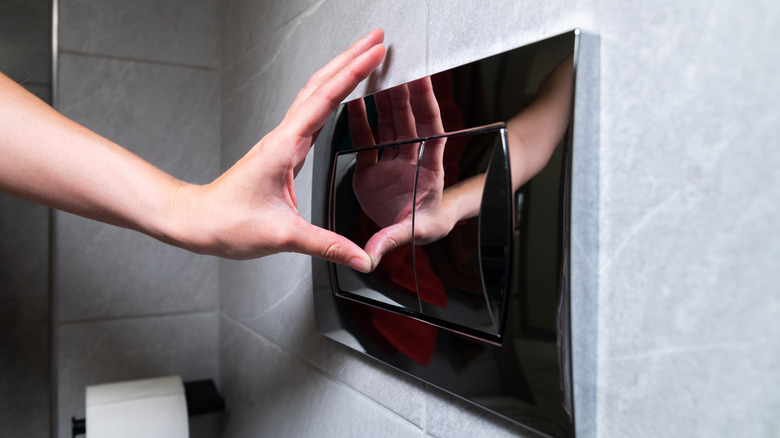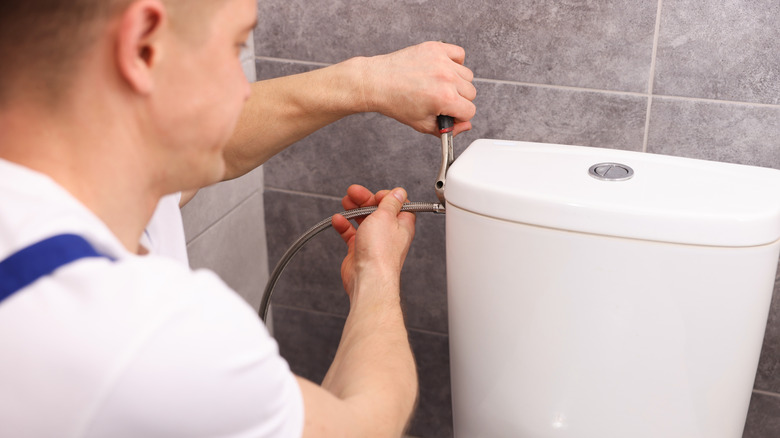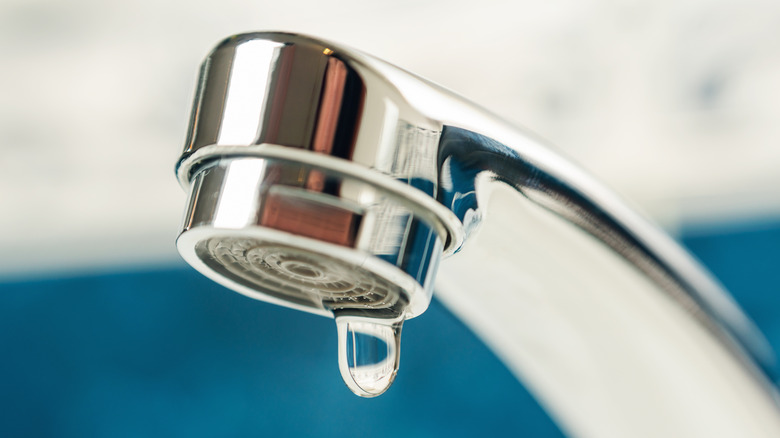Why Dual-Flush Toilets Might Not Be As Eco-Friendly As You Think
Designed with two buttons (one for liquids and one for solids), dual-flush toilets first became a thing in Australia back in the '80s as a response to the country's limited rainfall. The idea behind it? Help people save water when a full flush isn't necessary. And it worked: Early tests showed big savings on household water use. These days, they're everywhere — from homes to office buildings — and often seen as an easy way to go green. But the reality isn't always that straightforward. In some cases, dual-flush toilets can actually waste more water than they save.
The system relies on more intricate internal components than standard toilets, making it more prone to leaks — especially without regular upkeep. And they don't always pair well with older or low-pressure plumbing systems, which can lead to poor flushing performance. Without the right setup and upkeep, those eco-benefits can disappear fast, which isn't what you'd expect or want from something that's touted to do the exact opposite.
Common problems with dual-flush toilets
While dual-flush toilets seem like a smart choice on paper, in reality they come with a number of downsides. One of the biggest issues is leaks. The valve systems used in most dual-flush models tend to be more delicate than older, siphon-style toilets, and it doesn't take much for them to start letting water slip through. A slow, silent leak can go unnoticed for months, letting a surprising amount of water trickle away over time. According to a British utility company, via The Guardian, leaks from dual-flush toilets are so widespread that they're estimated to waste more water overall than they save.
Usage is another problem. Let's be honest — how many people really know which button does what? And if the light flush doesn't cut it, they'll often just flush again, which ends up using even more water than a single, full flush would have in the first place.
Retrofitting an older toilet into a dual-flush model isn't always the upgrade it seems. If your plumbing isn't compatible, you could end up with weak flushes, frequent clogs, or using more water than before. And since they use less water, it's not unusual to find bits left behind — meaning you're probably scrubbing more often than you'd like just to keep things sanitary. The takeaway: Without the right setup and upkeep, dual-flush toilets can wind up doing the opposite of what they were designed for.
Smarter ways to save water in your bathroom
If you're aiming for a more water-efficient bathroom, you don't have to rely solely on a dual-flush system — especially if your home's plumbing setup isn't ideal. A high-efficiency single-flush toilet might be a better fit. These models use just 1.28 gallons per flush (compared to the standard 1.6 gallons) and are certified by the EPA's WaterSense program, meaning they're both eco-friendly and performance-tested.
If you've already got a dual-flush toilet at home, a little regular maintenance can go a long way. It's worth checking the flush valve and seals now and then to make sure they're not starting to wear out. If you hear the toilet running when no one's using it, that's usually a sign there's a leak somewhere inside. Remember to give the flush buttons a quick clean once in a while as well — dust and dirt buildup can cause them to stick or stop working properly.
Lastly, if you're already upgrading your bathroom, don't forget about other sustainable swaps — like low-flow faucets or greywater systems — that can reduce water use without the risk of hidden inefficiencies.


